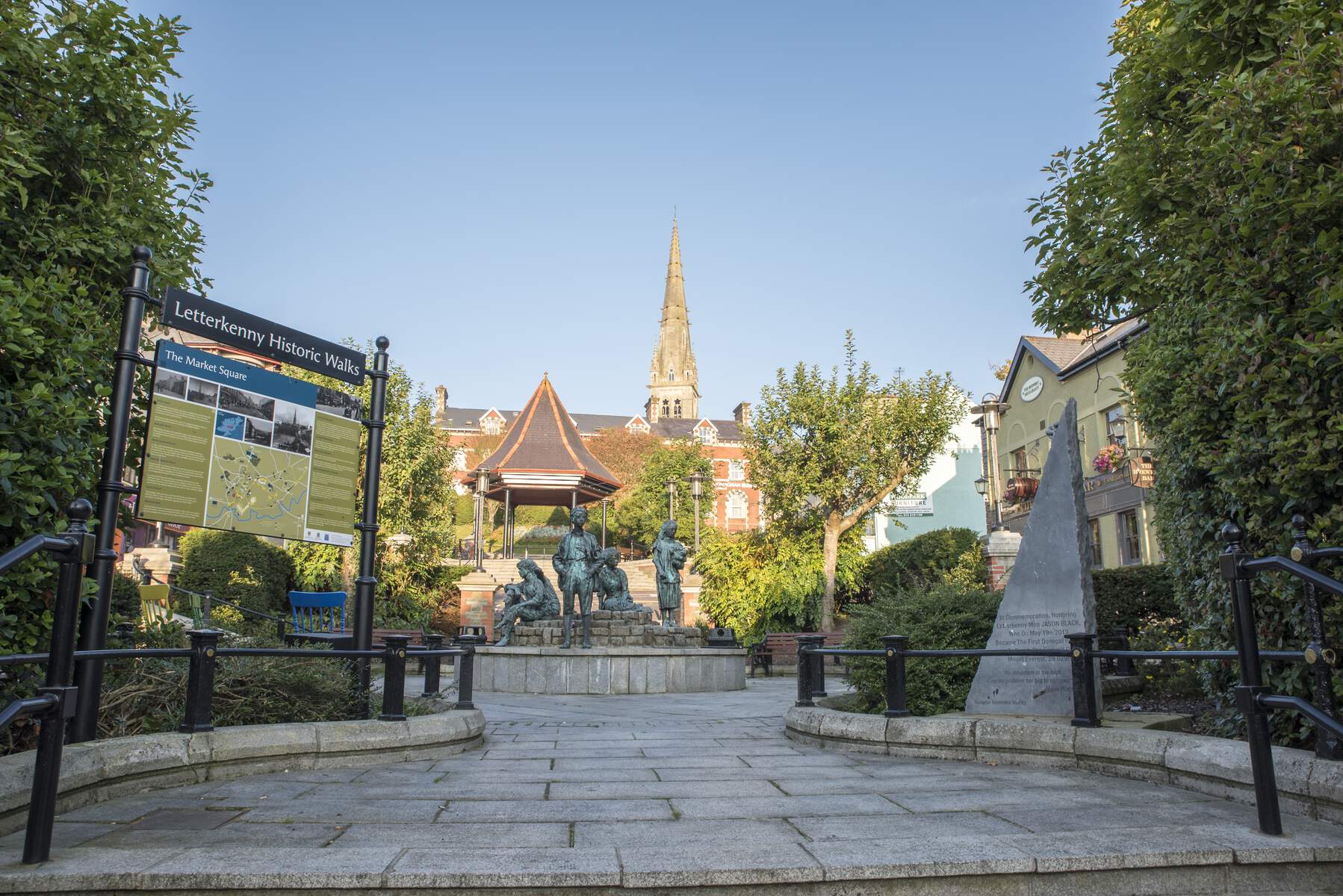By Felicity Hayes-McCoy
Recently, on a Golden Ireland break to the Inishowen Peninsula, I uploaded photos to social media using the hashtag #writersroadtrip and, each evening, posted updates on Facebook so my readers could come along for the (virtual) ride. I looked back on those postings just now, and they’re so full of great memories it’s hard to know how to begin this piece: images of stunning scenery vie with shots of delicious food, and videos of roads travelled by my husband Wilf and myself are captioned with stories of all the friendly people we met on the way.
Neither of us had ever been before to this north-westerly part of Donegal and, from start to finish, the trip felt like an adventure. Inishowen is the largest peninsula on the island of Ireland and probably the least-travelled stretch of the Wild Atlantic Way. From Letterkenny, Donegal’s biggest town, to Malin Head, as far north-west as you can go, is about eighty kilometres, and whatever route you choose to explore offers the spectacular skies, mountains, lakes and long beaches that make this area a photographer’s dream.
Our first two nights were spent in Letterkenny’s Clanree Hotel where the warm welcome made us feel immediately at home. On the approach road as you enter town, and only a few minutes’ drive to the centre, it has a tranquil interior that belies its setting. There’s a Leisure Centre with a sauna, jacuzzi, and a 20ft pool as well as a gym, and a Beauty Salon that promises “the perfect pampering treatment”. Our pleasant room had a subtle colour scheme of dove-grey and purples with crimson accents, dark wood and crisp, white bedlinen. The bathroom was sleek and the wi-fi free and speedy. After a day’s driving, it was the perfect place to put our feet up in comfort.
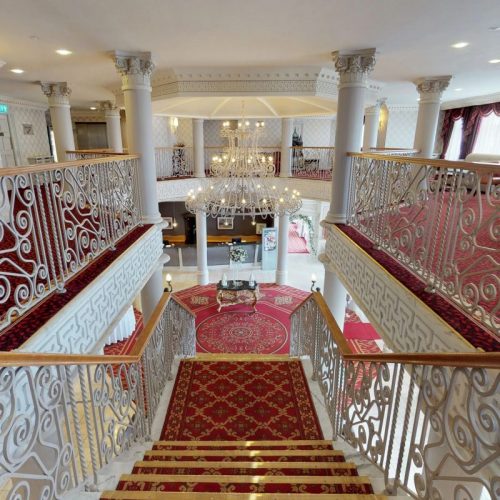
We ate in McGettigan’s, the hotel’s sports bar, where high-end, freshly cooked, pub fare is whisked to your table by young, friendly, immensely efficient servers. In fact, all the Clanree’s friendly staff had the same efficient vibe: I was due the following day at Donegal’s Highland Radio station, and Sharlene, one of the hotel’s receptionists, printed out a map, handwrote instructions and reassured me on timing, which sent me to bed with nothing to do but relax.
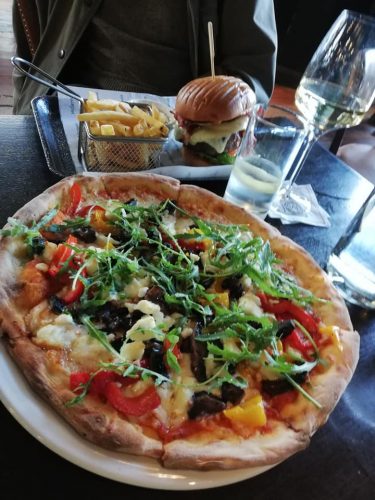
Next morning, after my radio interview, Wilf and I visited the County Museum, housed in a fine stone building once part of Letterkenny’s nineteenth century workhouse. We were lucky to catch a travelling exhibition, created by the National Museum in Dublin, of archive photos taken during the Treaty negotiations at the end of Ireland’s War of Independence. Upstairs was the museum’s own collection, beginning with local archaeological finds, including the Tullydonnell Gold Hoard, and continuing with well laid-out displays about local history. Among these was an unexpected jewel – an album of photos of Jane Austen’s nieces, Cassandra, Louisa and Marianne. (Who knew they lived in Donegal? I didn’t!) If you want to understand the history of the area, I recommend the museum as a starting place. It’s beautifully kept and curated, and has a wealth of maps and leaflets you can use as a basis for sightseeing.
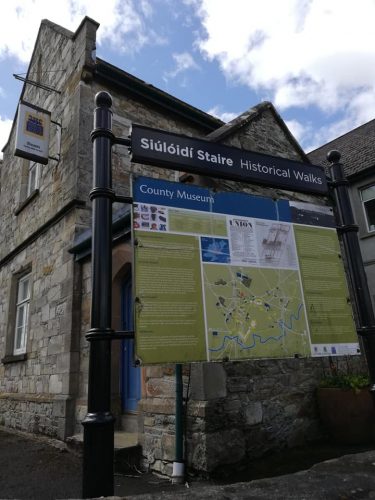
Armed with a selection of these, and a sense of the wealth of Inishowen’s archaeological heritage, we set off for Grianán Ailigh, a stone fort 250m above sea level, which overlooks the valleys of the Foyle and Swilly rivers. Its origins are unknown, though it’s likely to have been constructed on the site of an earlier hillfort, dating back to the Bronze or Iron Age and possibly surmounting a Neolithic burial place. In folklore, it’s associated with the Tuatha Dé Danann, a supernatural race said to have worshipped Danú, the Mother, a deity of pre-Christian Gaelic Ireland. What we do know is that Grianán Ailigh was once the ancient royal seat of the Cenél nEógain, a branch of the Northern Uí Néill, one of the most powerful and influential of Ireland’s early medieval dynasties. Its name translates roughly as “stony palace of the sun” and, in the Dindshenchas, a set of early medieval poems about the origins and traditions of places, it’s referred to as “green-sward of the world’s royal kings, fortress to which led roads horse-trodden, through five ramparts …” and “…honoured above hills like the silent Hill of Tara …”.
As it now stands (after extensive C19th restoration) Grianán Ailigh is an impressive circular structure 23m (76 feet) in diameter, with drystone walls around 5m (16 feet) high. Inside, a series of steps and terraces leads to the top of the walls. Wilf and I arrived on a windy afternoon when climbing the steps felt perilous and the landscape below was lost in mist. Then, as I clung to stone and tried to steady my phone to take a video, there was a violent gust of wind, the mist swirled away, and the views of glittering lakes and the distant Atlantic were breathtaking. It was a glorious introduction to the magic of Inishowen and, wobbly though it is, I treasure that video clip.
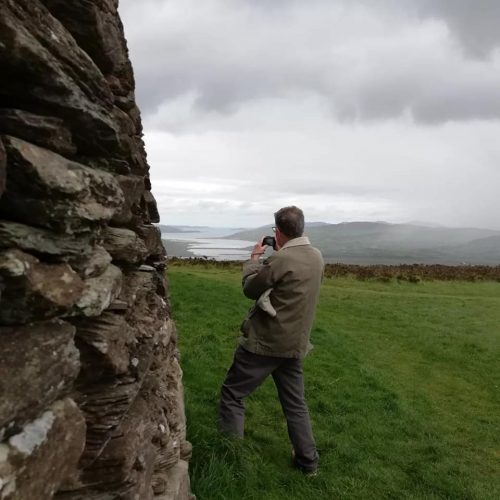
Windswept and elated, we made our way back to the carpark via a winding ramp that leads up to the path to the fort. It was a short drive back to Letterkenny and The Eatery Café at the town’s Grianán Theatre, where every cent you spend supports the theatre’s work with local youth groups, as well as its creative partnerships with companies such as Cork Opera House and The Lyric Theatre, Belfast. Then, fuelled for more sightseeing, we admired St Eunan’s Cathedral, visited bookstores, and discovered Letterkenny’s lovely Town Park, which has walking and sculpture trails, picnic areas, children’s playgrounds, and will soon have dedicated space for an Urban Adventures Sports Project and an outdoor covered stage for exhibitions and events.
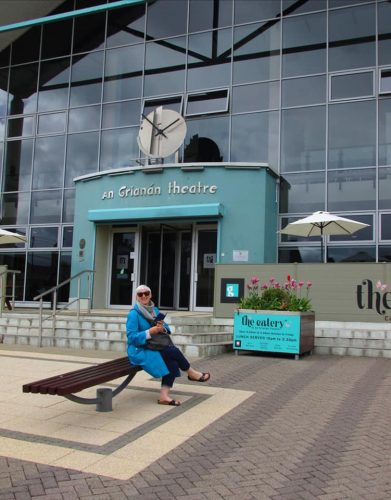
So, between Neolithic ritual and a neo-Gothic cathedral, it was a day of delightful contrasts. And that evening, after state-of-the-art burgers at McGettigan’s, we rambled upstairs to our comfortable room to plan more exploration of Donegal’s enchanting less-travelled roads.
fhayesmccoy June 2022
For more information, see Clanree Hotel
About The Author:
Felicity Hayes-McCoy is the author of the USA Today bestselling “Finfarran” novels, published by Hachette Irl, which have been translated into seven languages and are available in hardback, paperback, ebook and audiobook. Born and educated in Dublin, she built a successful London-based career, as an actor and then a writer. Her memoir The House on an Irish Hillside, published in 2012, continues to be read worldwide. A sequel Enough Is Plenty: The Year on the Dingle Peninsula, illustrated with her own photos, was followed by a second memoir, A Woven Silence: Memory, History and Remembrance.
Dingle and its Hinterland: People, Places and Heritage, a cultural guide to West Kerry, was co-written with her husband Wilf Judd with whom she divides life and work between rural Ireland and inner-city London.
For more Information, see Felicity Hayes-McCoy
